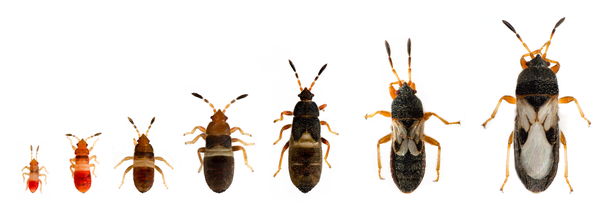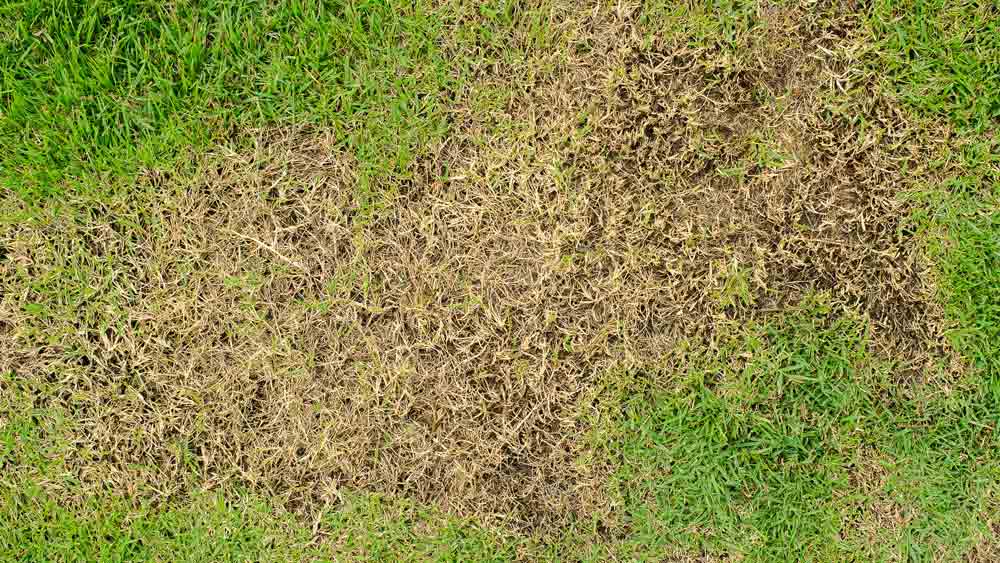Yellow patches in your beautiful lawn are proof that chinch bugs in Florida are a menace.
Spring is well known for being nature’s mating season, so pest and insect populations tend to increase during this time of year. Naturally, insect activity in your lawn and garden will be on the rise as well, which means that its time start spending more time on lawn care and more time making sure to keep the growing amounts of harmful insects out of your garden.
Chinch bugs, among others, become especially destructive in the late spring months. They cause visible damage to your grass in the form of dried-out brown and yellow spots. Too often these damaged areas from chinch bugs are mistaken for sun damage and then not given proper care.
Interesting Facts about Chinch Bugs in Florida
St. Augustine grass is the most popular turfgrass in Florida lawns. Approximately 2 million acres. Of this durable grass cover lawns in Florida. In comes the southern chinch bug, the single most damaging insect threat to this turfgrass and can rapidly cause a lot of damage.
Chinch bugs are most active when it’s warm –late June through early September—but may cause damage year-round, particularly in southern areas of Florida.Damage typically occurs in the sunniest areas of your lawn, especially when the weather is hot or dry.
Thick, lush lawns are especially prone to chinch bug damage as the thick thatch offers a great place for adult chinch bugs to feed and lay eggs. In fact, large numbers of chinch bugs will feed at the base of grass blades, sucking the sap until the blades turns yellow, wither, and die.
Because they feed in hordes, damage occurs quickly, and this insect does not take a break! When one area of grass is destroyed, the cluster moves to the next area and continues the feast. If they’ve decimated your lawn, they will move to your neighbors seeking fresh areas to feed. A relocating chinch bug population can cover over 400 feet in under an hour.Yikes!!
What to Do About Chinch Bugs?
ID Please
If your lawn is showing discolored patches, you may have a chinch bug infestation. Heavy infestations are easy to ID. An adult chinch bug has a black body with wings that fold flat on its back. Their wings are mostly shiny white with a little bit of black on the middle of the outer edge of each wing, giving the appearance of an x on their backs.
You may see the insects running over grass blades or even migrating as a group across a driveway or sidewalk. But that’s pretty obvious, right?

So here are two ways to check for chinch bugs.
- Part the grass in yellowed areas and look at the soil surface and thatch. Look for small white or red eggs or for the bugs themselves. Young nymphs are red with a pale white band while adult chinch bugs are black with white wings.
- You can also use the “flotation” or “can” method to bring out chinch bugs. Cut both ends off of a tin can and push one end of the can about an inch into the suspected area of infestation. Fill the can with soapy water, and keep it filled for about ten minutes. Insects in the grass will float to the surface, making it easier to identify them. Chinch bugs can be difficult to identify by sight, and look different at various stages of their lifecycle. If you suspect an infestation, it may be best to have an expert come take a look.
Managing Chinch Bugs
Landscape service companies can integrate several lawn care strategies to help prevent chinch bug infestations. These include proper mowing (keeping grass at the right height to promote strong root systems), scheduled and regulated fertilizer applications, and water management.
If an infestation occurs, chemical treatments are the most effective way to eradicate these pests. Some larger lawn care companies are equipped with the necessary chemicals, equipment, and experience to handle such pests; the average lawn guy is not. Proper identification, maintenance, and treatment take time, training, and experience.
If you mow your own lawn or have a small outfitter taking care of things, it would be wise to call in a professional pest control technician, like the friendly folks at Heath Pest Control, for example. We are proficient at diagnosing and using the correct chemicals. We know the proper amount, timing, and procedures to use. However, even then it can sometimes take more than one treatment for complete eradication.
Five Things You Can Do to Prevent Them
1.Follow recommended mowing and watering instructions.
2. Allow treatments to move through the thatch layer of your lawn.
3. Water deeply, but infrequently, paying close attention to ensure you’re not watering during or right after rainfall.
4. You should also monitor your irrigation closely to ensure proper coverage and that irrigation heads are working properly.
5. It is important to sod damaged areas to speed recovery and prevent uncontrollable weeds from invading.
Heath Pest Control would be happy to be your go-to solution for chinch bugs in Florida.

